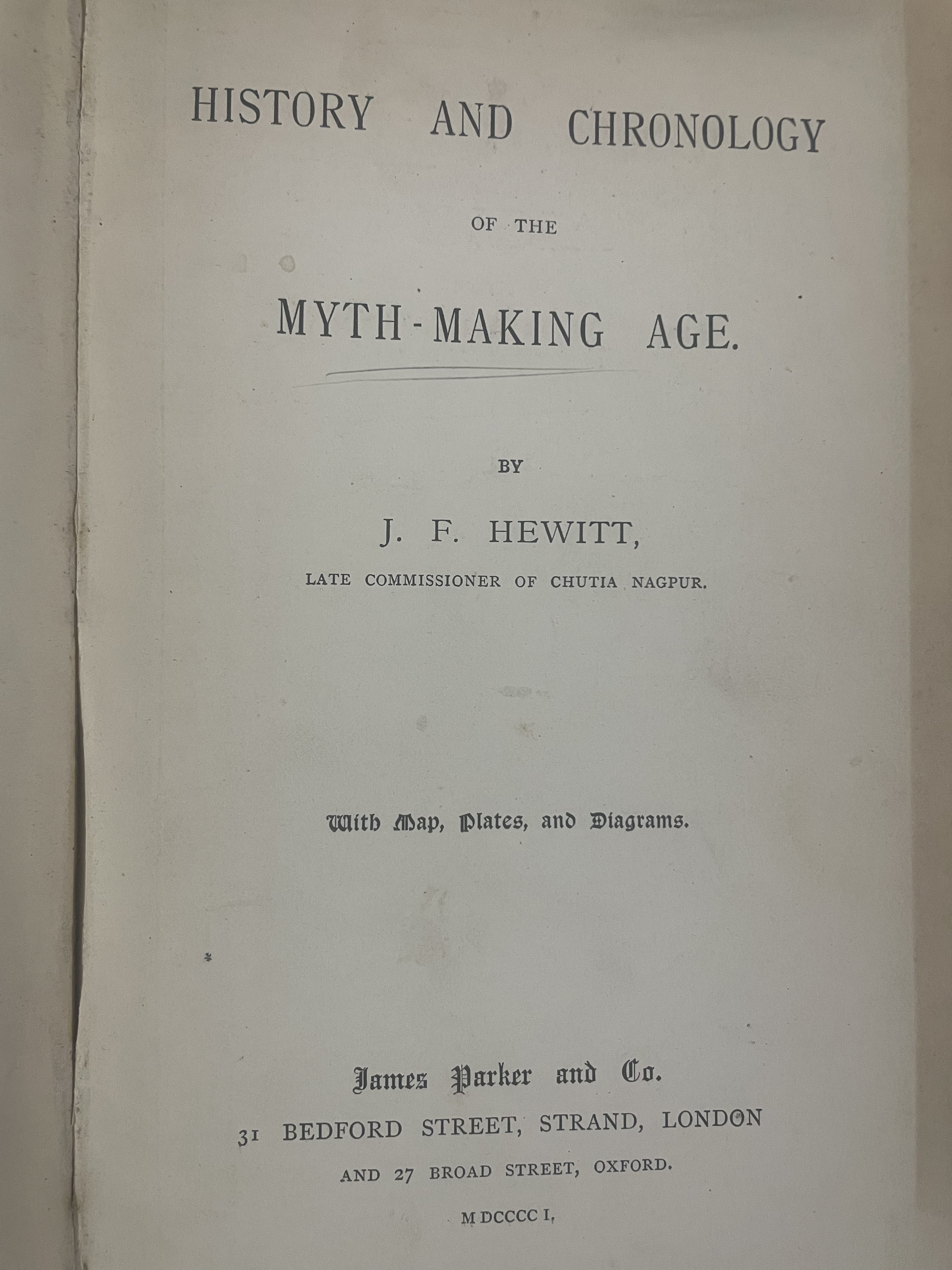History and Chronology of the Myth Making Age

About
Summary
Exquisite
TOC
Details
Related
URL
Images
Overview
History and Chronology of the Myth-Making Age by J.F. Hewitt, published in 1901, explores the concept of a Myth-Making Age and seeks to understand how myths functioned as a form of historical record in ancient cultures. Hewitt argues that myths are not merely inventions or fabrications but rather relics of genuine ancient history, intentionally crafted by early civilizations to transmit their history and cultural progress to future generations.Hewitt's central thesis is that myths served as a structured and reliable method of recording and transmitting history before the development of more formal writing systems. He posits that these historic myths followed specific rules and conventions that, when properly understood, can reveal valuable insights into the beliefs, social structures, and historical events of early societies. The book aims to decipher these rules and demonstrate the historical validity embedded within mythic narratives.
Key Themes
The Nature of Myth: Hewitt grapples with the fundamental question of what myths are and how they should be understood. He rejects the notion that myths are mere fiction, arguing instead for their historical value.
The Transmission of Knowledge: The book explores how early societies preserved and transmitted knowledge across generations in the absence of formal writing systems. Hewitt highlights the role of myths in this process, emphasizing their function as a form of cultural memory.
The Importance of Cultural Context: Hewitt underscores the significance of understanding the cultural context in which myths were created and transmitted. He argues that myths cannot be properly interpreted without considering the beliefs, values, and social structures of the societies that produced them.
Critique of Historical Method: Hewitt's work implicitly critiques the dominant historical methods of his time, which he believed were too focused on individual figures and events and failed to appreciate the broader cultural and historical significance of myth.
Origins of Civilization: By studying ancient myths, Hewitt seeks to understand the origins of civilization and the development of human culture. He believes that myths hold clues to understanding the earliest stages of human history and the foundations upon which later societies were built.
Cultural Significance
Alternative Approach to History: Hewitt's work represents an alternative approach to history that emphasizes the importance of myth and cultural tradition. It challenges conventional historical narratives and offers a different perspective on the past.
Interdisciplinary Approach: Hewitt's study combines elements of history, mythology, and comparative religion, reflecting an interdisciplinary approach to understanding human culture.
Emphasis on Cultural Memory: The book highlights the role of myths in preserving cultural memory and transmitting knowledge across generations. It underscores the importance of understanding and appreciating the cultural heritage embedded in mythic traditions.
Critique of Modernity: Hewitt's work can be seen as a critique of modernity and its tendency to dismiss traditional forms of knowledge and cultural expression. He suggests that modern societies have lost touch with the wisdom and historical understanding contained in ancient myths.
Effects on Society
It is difficult to assess the direct impact of Hewitt's History and Chronology of the Myth-Making Age on society. However, the book likely contributed to broader intellectual discussions about the nature of myth, the origins of civilization, and the role of culture in shaping human history.
Influence on Myth Studies: Hewitt's work may have influenced later scholars and researchers in the fields of mythology, folklore, and comparative religion. His emphasis on the historical value of myths and the importance of cultural context may have resonated with those seeking to understand the deeper meaning and significance of mythic traditions.
Promotion of Cultural Awareness: By highlighting the cultural richness and historical depth of ancient myths, Hewitt's book may have contributed to promoting cultural awareness and appreciation for diverse cultural traditions.
Challenge to Eurocentric Perspectives: Hewitt's comparative approach to mythology, which draws on examples from various cultures around the world, may have challenged Eurocentric perspectives on history and culture.
Stimulation of Intellectual Debate: The book's unconventional thesis and its critique of mainstream historical methods likely stimulated intellectual debate and discussion among scholars and readers interested in history, mythology, and cultural studies.
Conclusion
History and Chronology of the Myth-Making Age may not be widely known today, it represents a unique and thought-provoking contribution to the study of myth and its role in shaping human history and culture. Hewitt's work encourages readers to reconsider the value of traditional narratives and to appreciate the enduring wisdom embedded in ancient myths. His emphasis on cultural context, comparative analysis, and the importance of preserving cultural memory remains relevant for contemporary discussions about history, culture, and the human experience.
Title
History and Chronology of the Myth Making Age
Author
J F Hewitt commissioner of Chutia Nagpur
Name of Publisher
James parker and Co London
Publish Date
1901
Subject
Mythological and historical aspects of ancient India
Vintage
1901-1947
Number of Pages
682
Category
Literary
Sub Category
Social Sciences
Rarity
RARE
